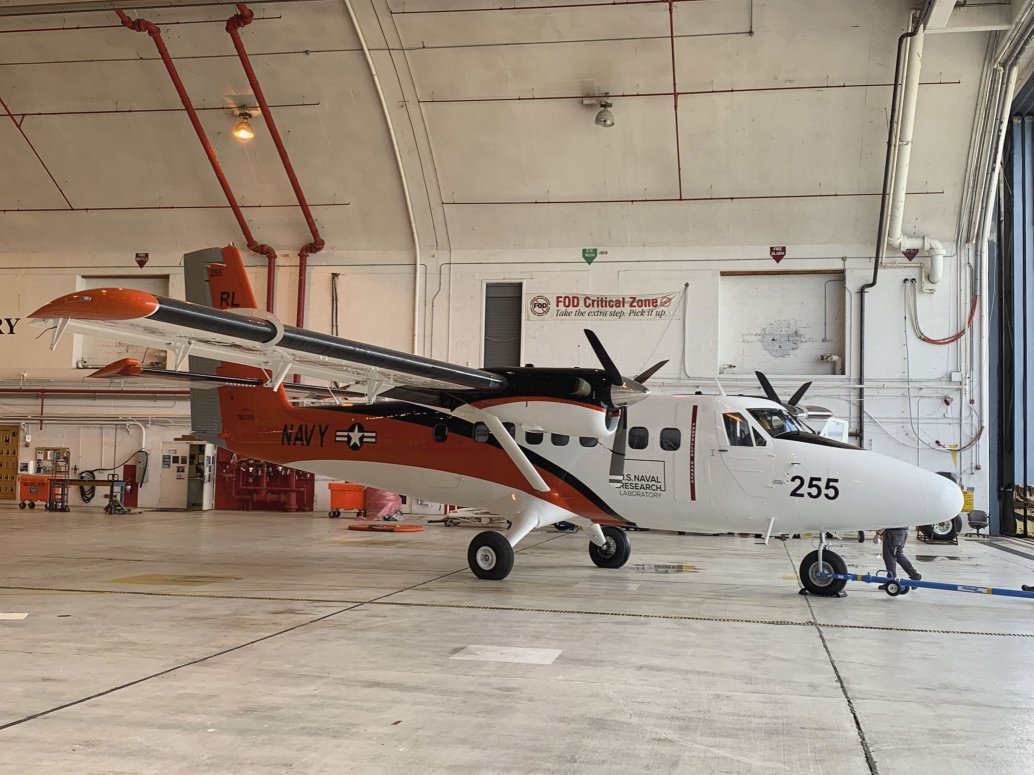
The US Naval Research Laboratory (NRL) modified its newly acquired De Havilland Canada UV-18 Twin Otter twin-turboprop light transport aircraft to provide an open architecture (OA) framework that would allow future research projects to be easily installed.
Commander Erik Thomas, NRL Scientific Development Squadron One (VXS-1) chief, told Jane’s on 4 June that modifications included framework allowing electro-optical (EO) camera installation in addition to power upgrades. The NRL, he said, contracted with Canada’s Rocky Mountain Aircraft for these modifications after buying the aircraft from the Naval Postgraduate School, which had two Twin Otters and was looking to divest one.

The NRL acquired a UV-18 Twin Otter, the military equivalent of the De Havilland DHC-6, to use in a variety of research projects such as magnetic variation mapping and electronic countermeasures. (NRL)
VXS-1 on 11 May unveiled the UV-18, the military equivalent of the DHC-6, as the newest addition to the squadron’s fleet of research platforms. VXS-1 now, in addition to the Twin Otter, has two Lockheed Martin NP-3C Hairy Buffalo technology demonstrators, one P-3C Orion in the USN operational configuration, one Beechcraft RC-12M, and 12 NASC TigerShark Group 3 unmanned aerial vehicles (UAVs), according to NRL spokesperson Raynel Koch.
The NRL was attracted to the Twin Otter due to its unpressurised nature. Cdr Thomas said this allows the navy to make faster modifications as it does not have to worry about breaking into a pressure bulkhead before undertaking a new flight clearance process. He said these faster modifications will also help the NRL fulfill the chief of naval research’s mission of accelerating technology into the fleet by performing research at a faster pace.
Looking to read the full article?
Gain unlimited access to Janes news and more...




